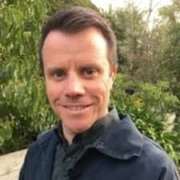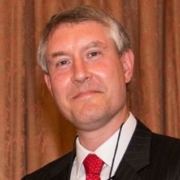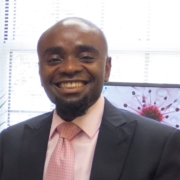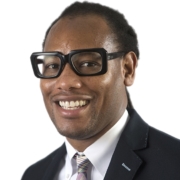In the realm of the in between: An ode to ethnography in Mauritius
Ijaaz Jackaria
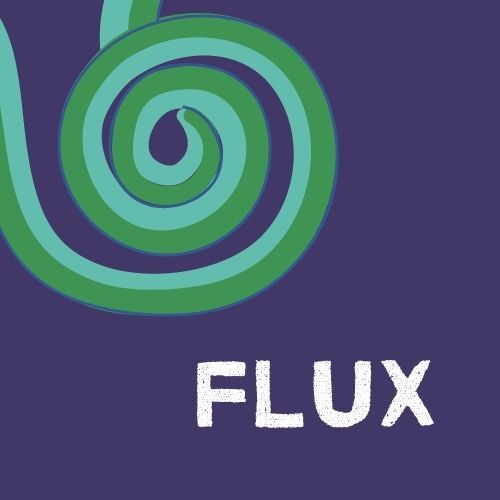 Today we start season 3 of Flux, a FreshEd series where graduate students turn their research interests into narrative based podcasts. To kick things off, Ijaaz Jackaria’s episode is an ethnography of Mauritius and its colonial past, where he creates his own Southern epistemology by bringing together cosmology, philosophy, and Islamic theology.
Today we start season 3 of Flux, a FreshEd series where graduate students turn their research interests into narrative based podcasts. To kick things off, Ijaaz Jackaria’s episode is an ethnography of Mauritius and its colonial past, where he creates his own Southern epistemology by bringing together cosmology, philosophy, and Islamic theology.
Let Season 3 of FreshEd Flux begin.
Full Credits:
Voices
Narrator, Monologue in field recordings, Translator of Quranic verse: Ijaaz Jackaria
Dad: Mohammad Yousouf Jackaria
Reader of Ibn Arabi’s texts: Parween Taleb-Jackaria (mom)
The voice of Carl Sagan is “a gift to this site by Cosmos Studios. Carl Sagan’s audio from Pale Blue Dot, originally by Brilliance 2017. Copyright © 1994 by Carl Sagan. Copyright © 2006 Democritus Properties, LLC. All rights reserved.”
Muslim Preacher 1: Shaykh Dr. Haitham al Haddad
Muslim Preacher 2: Nouman Ali Khan
Haram Beats Composers: Brett Lashua & Ijaaz Jackaria
Original Voice in Haram Beats: Shaykh Dr. Haitham al Haddad.
Quran Reciter 1: Shaykh Sudais
Quran Reciter 2: Salim Bahanan
Music and Sounds from YouTube Creative Commons
Sounds from Interstellar Space
Music and Sounds from Soundstripe
Music and Sounds from Bandlab
Special Thanks
Special thanks to Dr. Lindsey Horner and Dr. Fatih Aktas from the University of Edinburgh for their academic guidance. A big thank you also to Johannah Fahey, executive producer of FreshEd Flux, for her unrelenting support and supervision throughout the production of my episode.
Sufi Chants:
Allah… Allah… Allah…
Carl Sagan:
Every teacher of morals, every corrupt politician, every “superstar”, every “supreme leader”, every saint and sinner in the history of our species, lived there – on the mote of dust, suspended in a sunbeam.
The Earth is a very small stage in a vast cosmic arena.
Our planet is a lonely speck in the great enveloping cosmic dark. In our obscurity, in all this vastness, there is no hint that help will come from elsewhere to save us from ourselves.
Narrator:
As a mote of dust, suspended in a sunbeam… a lonely speck in the great enveloping cosmic darkness…
That is how I felt as a cacophony of ideas swirled in my head: Carl Sagan’s description of the cosmos, Plato’s allegory of the cave, and Ibn Arabi’s gnosticism. I was lying on a sandy beach on the west coast of my home country – Mauritius – gazing up at the southern night sky.
Monologue
We are a small island. And you clearly get to see the night sky above. It’s just so amazing to look literally at the past because well, those lights take light years to come here. So, looking at the night sky is kinda looking at the past and seeing how things were years, millions of years ago, or thousands of years ago, depending on how, how far they are. Just looking at the void and the darkness makes me think about how much we don’t know what’s out there, what’s happening: black holes and physics stuff, which we still have to figure out.
Quran Reciter 1:
إِنَّ فِى خَلْقِ ٱلسَّمَـٰوَٰتِ وَٱلْأَرْضِ وَٱخْتِلَـٰفِ ٱلَّيْلِ وَٱلنَّهَارِ لَـَٔايَـٰتٍۢ لِّأُو۟لِى ٱلْأَلْبَـٰبِ
Quran Translation:
Indeed, in the creation of the heavens and the earth and the alternation of the day and the night there are signs for people of understanding.
Narrator:
Even amid the chaos of the world above, the infinite cosmos, one finds order if one knows how to read the stars. For many, the academic disciplines of Physics, Philosophy, and Theology are as disparate as they could be.
But not for me.
Carl Sagan was an astrophysicist and the Pale Blue Dot is a photograph of the Earth taken in the 1990s by the Voyager 1 space probe. Sagan lobbied for that image to be captured because he wanted us to know how small and insignificant our world is:
Carl Sagan:
Our posturings, our imagined self-importance, the delusion that we have some privileged position in the Universe, are challenged by this point of pale light.
Narrator:
The Cosmos that Sagan described is but one dimension of reality in Plato’s metaphysics. Metaphysics, it is a branch of philosophy and as the name suggests – meta meaning beyond – it is concerned with abstract ideas and the world beyond physics. The Allegory of the Cave illustrates the dimensions of different worlds: on the one hand, there are the shadows cast on the wall of the cave – mere flicking representations of the real world; on the other hand, there is the colourful real world out there, beyond the shadows. Through this allegory, Plato illustrates the different ways of knowing reality and how people experience it.
As for Ibn Arabi, he was a Sufi – a Muslim mystic – from mediaeval southern Spain who has significantly influenced my intellectual exploration. He theorised that while the knowledge of the essence of God, the absolute reality, is unknowable, His attributes can be contemplated through the cosmos and the human self, thus unifying the disciplines of Physics, Philosophy, and Theology into a triune body of knowledge for me.
Coming from the tiny island that is Mauritius, it was not an easy task to pursue my intellectual voyage. Mauritius is barely visible on Google Maps; to pinpoint it you travel due south of the Arabian peninsula, and due east of Madagascar, then as you zoom in it slowly emerges out of the blue depths of the Indian Ocean. I felt like a lonely speck in the great…
Carl Sagan:
enveloping cosmic dark.
Narrator:
Boaventura de Sousa Santos is a pioneering scholar of southern epistemologies – epistemology being the study of the ‘episteme’, meaning theory of knowledge. He points out how Eurocentric cartographies make certain false assumptions when navigating the globe; they do not do justice to the southern Hemisphere:
De Sousa Santos:
Cartography, you know, is a technique through which people draw maps. These maps, in fact, since modernity, have been fraudulent maps. Why? Because the north is not really the north; it’s the centre. Because the West is not really the West; it’s the centre. And therefore, the south is not really the south; it’s the periphery. And the east of course is not the east; it’s the periphery. And it is to these manipulations of locations of spaces that in a sense we managed to develop a cartography that miniaturises all the other possibilities coming from outside the West or from outside the north.
Narrator:
While the Mauritian population is mostly Hindu, as I belong to the minority Muslim community of around 200,000 people, I guess I’m miniaturised even more. But let’s not forget that Muslims are one fifth of the world’s population and Mauritian Muslims’ past French and British colonial history is engraved in our identity, our language, our culture.
Back to the 18th century: the French settled on Mauritius in 1710, importing slaves from Africa and artisans from India to develop the island. A century later, the British took over Mauritius and brought indentured labourers from India to work in the sugar cane fields – which explains why the bulk of the Mauritian population today are of Indian descent.
As a teenager in the 21st century, I led an average middle-class Muslim Mauritian life: I grew up speaking creole at home, watching Harry Potter in French, and studying in a British curriculum public high school. I enjoyed my pain au chocolat for breakfast and fasted during the month of Ramadan.
After I graduated high school in Mauritius, I set out for the United States where I completed my undergraduate studies at the University of Chicago with a major in Philosophy and minors in Physics and Islamic Studies.
Today, I look back at my intellectual journey, assessing my education in Mauritius and I ponder the many instances where certain knowledges were consciously or unconsciously being relegated to an inferior status or being eradicated outright.
In particular, the tendency to regard western forms of knowledge and education – modern science – as superior to other forms of knowledge was an injustice committed against my informal religious education in Mauritius. It was an epistemicide; just like the word “genocide” means the eradication of “genes” or a particular ethnic group, epistemicide is the killing of the “episteme”, meaning particular knowledge systems.
This phenomenon of epistemicide is not unique to Mauritius; De Sousa Santos talks about how to counter this tendency to eradicate knowledges that are not derived from the West. He says:
De Sousa Santos:
So we need an epistemology of the south, which is really a procedure to inquire into forms of knowledge and validation of knowledges from the perspectives of the people that have suffered in a systematic way the injustices of colonialism, capitalism, and patriarchy. There are other understandings of the world. There are other forms of looking at reality of the world, and we should really engage with those.
Narrator:
I probe my memories for instances of epistemicide, and each past experience feels like, like a quantum box – a discrete anecdote that I can access and analyse.
You’re probably wondering what a quantum box is. You gonna hear me explain to my producer what it is next but let me warn you: I’m talking really fast. This usually happens when I talk about stuff I love, physics stuff in particular.
Monologue:
The quantum box for me was more like philosophy or metaphysics of time. Not sure if you’ve heard of A theory of time and B-theory of time… The A-theory of time is the continuum theory of time, where we’ve got the present, the future and the past, and time flows in this one direction. And then there is the B-theory of time which is a little bit more quantized – that’s where the idea of a box came in, where like one moment is delimited. And also, there is a hadith literature in Islamic tradition, which goes something like on the day of resurrection, when your good deeds and bad deeds are being weighed, you kinda see your life in the form of those boxes. And each box represents your deeds. So, you open one box, if it’s like a good deed, okay you passed it. If it’s like a bad deed and so on and so forth, that’s how the counting goes.
Narrator:
Yeah, well, I did try to warn you!
One past experience, one quantum box, the anecdote I’m now going to access and analyse is a memory that intrigued me for the longest time. It was a conversation I had with my dad. I was around thirteen at the time and we were ‘visiting the dead’ at the kabarastan – the Muslim cemetery.
It is customary for us Muslims to visit the graves of family members. It reminds us that death is an ever-present part of life. We believe that those who passed away are not exactly dead. Rather, they’ve crossed the physical world into the alam e barzakh (the world of the in-between) where they remain until judgement day.
Monologue:
I’m currently at the Bois Marchand cemetery. I am here with my dad right now and we visited the grave of my grandpa, my paternal grandpa.
The cemetery itself is relatively quiet. There is just like small pieces of mounds, rows of tombs around. Pretty modest, no specific structures. On the tomb itself, usually, it’s just some plants that people just put on them. It’s a sign of rebirth. There are the mango trees around, the eucalyptus trees, some tamarind trees as well. It seems it hasn’t rained but it’s pretty green, so it’s technically spring here. So, we’re kinda like transitioning from winter to summer.
Right ahead, as I entered, there is what we call a dargah which looks like a small mosque. There are little minarets around. I could hear people afar chanting some religious songs if you want. There are flags: red, green, white – which looks very similar to the Saudi flag actually with Arabic writings on it.
Narrator:
I still remember how my dad explained to me the significance of a dargah.
Dad:
Et dans le contexte local, ene dargah li relier à ene school of thought kot ban personnes, zot ena tendance vénère ene spiritual leader, veut dire ene pir ou wali allah.
Narrator:
He told me how the dargah is a site, usually the tomb of a pious person upon which a kind of mausoleum is erected, where people would venerate the saint, also known as pir or waliy ullah – literally meaning friend of God.
Dad:
D’après les récits, ban pirs la apparemment zot ti ena capacité pu faire ban miracles.
Narrator:
It is believed that those saints were able to perform miracles like healing people or having knowledge of the unseen such as predicting the future. Apparently, their bodies wouldn’t decompose as well and this was regarded as a sign of their sainthood. Back in my mind, I was thinking more about the lack of saprophytic organisms that would hinder the decomposition process, but I kept listening.
Dad:
Kan zot fine décéder, zot lecorps pas fine décomposer après ene période cinq ans. Mo pas coner si vraiment dimoune in witness sa réellement ou c’est ban contes ki vin la réalité.
Narrator:
My dad pointed out that not all Islamic schools of thought agreed on the dargah; some would actually categorically oppose the construction of monuments on tombs or even more the veneration of saints. Since it was a topic of controversy, a topic that was not well established, he cautioned me against diving deeper into the subject of saintly miracles particularly. I might get confused and so it was better to leave certain things unexplained – so he thought!
For the longest time, I wondered why he cautioned me against certain knowledges that were the domain of the saints. It bothered me to not be able to make sense of certain phenomena. Even more worrisome for me was this active avoidance to even ponder this phenomena.
It’s much later, after years of digging in arcane mediaeval Sufi theology, that I found out that the concept and the lived experience of the waliy ullah was actually very much documented. For instance, at UChicago, I studied the works of Ibn Arabi who wrote volumes and volumes on the metaphysics of sainthood.
Why then? Why was this not being disseminated in my community? Why didn’t I – or even my dad – know about this established path of sainthood at the cemetery all those years ago?
This led me to look back at another quantum box of my memory: my own Islamic education – particularly what was being taught and what was being actively censored.
Hifz Instructor and student:
إِنَّمَا ٱلنَّجْوَىٰ مِنَ ٱلشَّيْطَـٰنِ لِيَحْزُنَ ٱلَّذِينَ ءَامَنُوا۟
Narrator:
Ahh, the madrassa – the traditional Islamic school! What a distant memory. But as we grow, having to wake up at six in the morning on a Sunday to recite chapters of the Quran and study Islamic precepts… isn’t very exciting.
As a teenager, I attended a secular British curriculum public high school in Mauritius: The Royal College Port-Louis. I devoted 5 days a week to regular schooling and only half a day on weekends to the madrassa. When it comes to my religious education, it was never given the same importance as my secular education – because well, an Islamic education is not going to land you a job in the world we live in.
One of the common stereotypes associated with Islamic education is that it’s just rote learning. It’s true, there’s a discipline called hifz which is the memorization of the entire Quran – I would qualify that as rote learning. However, I did not study hifz when I was in madrassa, rather, I learned tajweed: the understanding of the rules of Arabic pronunciation and Quranic recitation.
Tajweed Instructor:
So ok, let’s look at the first full mouth letter which is a kha. Top of your throat, kha. Ok, it’s a full mouth. Ok, first example: khalidina, khalidina.
Narrator:
As you can hear, tajweed is more akin to phonetics within linguistics.
Tajweed Instructor:
Next one: khuliqa, khuliqa. Last one: yakhruju, yakhruju.
Narrator:
Aside from Quranic recitation, my madrassa education was only teaching basic religious knowledge, often on a truncated version of history and a one-sided perspective. And it should come as no surprise there was an obsessive emphasis on right conduct. Most people are aware that we Muslims, we don’t drink alcohol, we don’t eat pork because well, those are prohibited – or haram as we call it. What many people are not aware of though is that the haram stuff is not just about food; it is present in all spheres of our lives.
Muslim Preacher 1:
Is music, or is listening to music haram? We will say yes, it is haram.
It is haram
It is haram
It is haram
Yes, it is haram
It is haram
It is haram
It is haram
Yes, haram, haram, haram…
Narrator:
Muslims have developed a culture of exclusion today where “everything is haram, until proven halal,” i.e. everything is forbidden except what is explicitly allowed. However, some preachers find this concerning:
Muslim Preacher 2:
Kids are in an Islamic school; one kid is eating chewing gum. Yo, that, don’t eat chewing gum, that’s haram. The other one is playing a video: video! videos are haram! No matter what you do, the first word that comes out of the kid’s mouth is what? Haram. They didn’t invent that themselves; they got that from their parents. They got that from a culture where we love casually to use the word haram for everything.
Narrator:
Why, though? Why this obsession with the halal and haram? Is that all there is to Islam?
Why did they not teach us about the waliy ullah? Remember my dad and I at the cemetery and the saints who could perform miracles, the friends of God? Why did they not teach us about Islamic metaphysics and cosmology? Why did they not teach us the healing properties of the Quran for example? Why did they not teach us about the meditative practices of zikr? What about tasawwuf, spiritual character development of the human being? What about knowledge of God?
Why this epistemicide?
We are made to believe, by both religious institutions and secular state-sponsored education, that religious knowledge and academic knowledge are mutually exclusive, that they operate in different realms. That science explains the physical world and religion tells us what to do to gain salvation in the hereafter.
But why have we settled between those rigid dichotomies: the sacred vs the secular, science vs religion, physics vs metaphysics? Why is no one opening the gates of the barzakh – this realm of the in-between, the world between heaven and earth? Perhaps no one has the authority…
Quran Reciter 2:
يَـٰمَعْشَرَ ٱلْجِنِّ وَٱلْإِنسِ إِنِ ٱسْتَطَعْتُمْ أَن تَنفُذُوا۟ مِنْ أَقْطَارِ ٱلسَّمَـٰوَٰتِ وَٱلْأَرْضِ فَٱنفُذُوا۟ ۚ لَا تَنفُذُونَ إِلَّا بِسُلْطَـٰنٍۢ
Narrator:
I wish I had benefited more from my Islamic education back then, not necessarily to become more religious, but for the love of knowledge, to better embody and live the teachings of Islam rather than learning a dead black-and-white science. But I guess I never found anyone with authority to help me cross into the realm of the barzakh….
Poem Reciter:
Listen to how this reed is wailing;
About separations, it’s complaining:
From reed bed since parted was I,
Men, women have cried from my cry.
Only a heart torn – torn, longing
Can hear my tales of belonging.
Narrator:
You’ve probably heard of the love poems of Rumi: about wine and love, and heartache. But did you know that Rumi was a Sufi, a Muslim mystic?
Back when I was in high school, I read Rumi. It was interesting, but it did not satisfy me intellectually, not the way Ibn Arabi’s work did at least. Rumi embodies the stereotype of the “drunken Sufi” – it’s all about love, music, and dance of the whirling dervishes. But what captured my interest was the lesser known Sufi intellectual tradition, the more esoteric and sober one – the one that shows that mysticism is not just ecstasy but very much centred on knowledge acquisition.
Here’s a more accurate depiction of what Sufism sounded like to me:
Reader of Ibn Arabi’s Text:
God possesses Nondelimited Being, but no delimitation prevents Him from delimitation. Hence He is Nondelimited Delimitation; no single delimitation rather than another exercises its property over Him.
Narrator:
Real mumbo jumbo. And trust me, Ibn Arabi’s abstract metaphysics and theology can give you a headache. I first encountered this version of Islamic mysticism when I randomly came across a copy of Ibn Arabi’s Fusus al-Hikma, translated as Seals of Wisdom. The book was relatively short but it was super intellectually dense. It’s divided into 27 chapters – each one relating to the wisdom of a prophet. However, the language is clouded in esoteric metaphors, jumping from prophetic stories to names of God and levels of cosmic existence. Just reading out the first paragraph of the first chapter of the book completely blew my mind:
Reader of Ibn Arabi’s Text:
For how a thing sees itself through itself is not the same as how it sees itself in something else which acts as a mirror for it. So He manifests Himself to Himself in a form which is provided by the place in which He is seen. He would not appear thus without the existence of this place and His manifestation to Himself in it.
He willed that they be seen in a microcosmic being which contained the entire matter.
Narrator:
A microcosmic being which contained the entire matter… Isn’t that vaguely reminiscent of Carl Sagan’s Pale Blue Dot? Of a mini universe within us.
Carl Sagan:
As a mote of dust, suspended in a sunbeam… a lonely speck in the great enveloping cosmic dark…
Narrator:
Could Ibn Arabi’s mysticism be the barzakh between the physics and the metaphysics, the macrocosm and microcosm? Even though at the time I didn’t quite know what ‘epistemology’ was, it did present me with a different worldview, a different way of acquiring knowledge.
Could this be a form of southern epistemology that De Sousa Santos speaks of?
De Sousa Santos:
There are other understandings of the world. There are other forms of looking at reality of the world, and we should really engage with those.
Narrator:
It’s only later in college, when I started taking Islamic Studies classes, that I began to fathom Sufism as a branch of study. The assumption that reason or rational thinking trumps other modes of knowledge is problematic when approaching Sufi cosmology.
Dr Casewit, one of my Professors at UChicago articulates it this way:
Dr Casewit:
What is Islamic mysticism?
You might say it places immediate emphasis on direct relation to God, on immediate consciousness of the divine presence. You could describe it as religion in its most acute, intense, and living stage. Sufis emphasise the importance of directly seeing, directly tasting, directly experiencing one’s relationship to God. And this direct experience with this personal, embodied knowledge lies at the root of Islamic mysticism.
Narrator:
I know, I know, all this God talk sounds very religious… but it is not just about theology, it is philosophical, it is about epistemology, about approaching knowledge differently.
Dr Casewit:
The primary distinction, you might say, is epistemological. In other words, Sufis affirm that the heart of the human being, when it’s trained and polished, can have experiential knowledge, can have access to higher realms of knowing than the rational faculty. Through a process of self-purification and at the hands of someone who has travelled the path. And this claim, this epistemological claim, is eventually accepted within Islamic theology.
Narrator:
Now, you might be wondering what this experiential knowledge is about. What this “directly seeing, directly tasting” way of acquiring knowledge means. Well, to put it in words would be an injustice to the experience itself. But all I can say is that, this epistemology relies on subjective interpretative contemplation, of cultivating an intimacy between the contemplator and the contemplated.
I have asked many questions. Why wasn’t I aware of the waliy ullah, the saintly friends of God, at the cemetery all these years ago? Why is Islamic education obsessed with the halal and the haram? Why is Islamic mysticism so hard to understand? How did we come to all this?
Do you think I have answers to those questions? Well, I hate to disappoint you, but I don’t know.
What I do know is that in our vast universe, there are things that remain unknown; as of now, only about 4% of our universe is known: the mysterious dark matter and dark energy make up around 96% of our universe. There is stuff out there that remains unknowable, whether in the infinite cosmos above or in the microcosm within ourselves.
It is this subjective experiential contemplative knowledge that demands a new form of epistemology, a southern epistemology that needs to be understood on its own terms – one that is not informed by the Western literary tradition, not constrained by a Western history of philosophy. Rather than separating the worlds of physics and metaphysics, of the secular and the sacred, this version of a southern epistemology opens the gates to an in-between realm, the realm of a barzakh.
How do we get there? I’ll leave it up to you….
Thus ends my story with a new beginning to reflect upon. Remember how I was stargazing at the start? I am but one voice from a tiny Island on a Pale Blue Dot in the engulfing darkness of the cosmos.
Carl Sagan:
Consider again that dot. That’s here. That’s home.That’s us. On it everyone you love, everyone you know, everyone you ever heard of, every human being who ever was lived out their lives.
Narrator:
And on this Pale Blue Dot are the knowers that contemplate the unknown and the unknowable. That’s mysticism. That’s Sufism. That’s another way of knowing. Another way of living out our lives.
Sufi Chants:
Allah… Allah… Allah…
Want to help translate this show? Please contact info@freshedpodcast.com
Letter to the Listeners: A Companion Read
Dear Scholars,
Thank you for hearing my story.
I hope you found my Flux episode intellectually engaging, that it has piqued your interest to explore some of the academic concepts – both within education research and beyond – I present therein. In the spirit of valorizing our individual subjective voices and transcending the structures that limit free expression in western academia, I am writing this letter to you in place of a traditional bibliography and a further reading list. In some ways, it is a deconstruction of my research as well as an invitation to an exclusive backstage making of my episode. I do apologize for spoiling the fun to the easter eggs hunters who’d be keen on looking for hidden messages within my story.
I’m undoubtedly indebted to the intellectual tradition of post-structuralism, particularly that of Jacques Derrida, for adhering to such a bold stance. As such, reading Of Grammatology and Writing and Difference – albeit in parts, considering how abstruse Derrida’s writing can be – was empowering; they provided the foundation, an opening, to introduce novel ideas and experiences. I should also credit my mentor from the University of Edinburgh, Dr. Lindsey Horner, whose work has been influential on my episode, especially in favoring the genre of autoethnography to convey my message. Finally, ethnography and post-structuralism cannot be properly integrated without consulting Writing Culture: The Poetics and Politics of Ethnography. Therefore, following the post-structural Derridean legacy of il n’y a pas de hors-texte (there is nothing outside the text), I invite you listeners to engage with my story beyond my intentions as the author, to consider my episode as a living piece on its own within the realm of discourse.
Coming to the title of my episode, I was first inspired by a section of the Ayat al-Nur from the Quran (S24:V35): “the blessed olive tree neither to the east nor to the west.” The idea was to reflect the cartography of De Sousa Santos’ Epistemologies of the South and The End of the Cognitive Empire. However, as I developed my story, the theme of the Barzakh, the in-between realm, became more prominent – and once again taking the Quran as its source (S55:V19-20): “He merges the two bodies of water // yet between them is a barrier (barzakh) they never cross.”
The name of Allah, that is how I begin and end my story for “He is the First and the Last, the Manifest and the Hidden, and He has knowledge of all things” (S57:V3). I use two additional Quranic verses: “Indeed in the creation of the heavens and the earth and the alternation of the day and the night, there are signs for people of understanding” (S3:V190) and “O assembly of jinn and humans! If you can penetrate beyond the realms of the heavens and the earth, then do so. [But] you cannot do that without [Our] authority” (S55:V33) – both stressing the connection with the “heavens and the earth”.
Carl Sagan is Physics personified. Yet, he is more than that. The Pale Blue Dot, both the enigmatic recording as well as the book, and Cosmos, the book and documentaries, altogether provide fascinating insights into Sagan’s thought. Complementing his vision of the cosmos are NASA’s Sonifications, the “sounds” of the universe, and unsurprisingly The Little Prince’s take on the stars: “For others who are scholars, they are problems.”
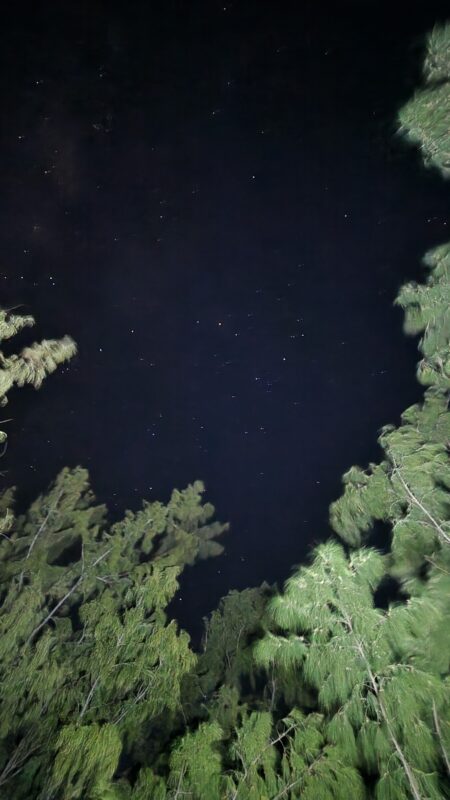 Stargazing at the beach, Mauritius
Stargazing at the beach, Mauritius Stargazing at the beach, Mauritius
Stargazing at the beach, MauritiusOn the classical philosophy side is Plato’s Allegory of the Cave which is found in Book 7 of The Republic. Post-dating Plato by around 1600 years is Ibn Arabi who happens to be known as Ibn Aflatun, meaning ‘Son of Plato’. To those not familiar with Sufism or Ibn Arabi’s context, I recommend What is Sufism, The Origins of Andalusian Mysticism, and Ibn Arabi and the Unity of Being. Heir to the Prophets and Quest for the Red Sulphur are also introductory reads. Dr. Casewit’s The Mystics of Al-Andalus further details the Sufi metaphysics behind the interconnections between the cosmos, scripture, and human self.
For more in-depth exploration of Ibn Arabi’s ideas, the Fusus Al-Hikma, The Sufi Path of Knowledge, and Ibn al-Arabi’s Barzakh are essential readings. The Bezels of Wisdom, an analysis of some of the main themes in the Fusus Al-Hikma, is highly recommended as well. For a contemporary engagement with Ibn Arabi’s legacy in a traditional Sufi order, I recommend Shaykh Al-Karkari’s Introduction to Islamic Metaphysics.
I am assuming that Mauritius is probably unheard of for many of you. I hope that Drew Binsky’s vlog on 5 Things You Didn’t Know About Mauritius and Dr. Eisenlohr’s work on the Island provides you with some context.
 Jummah Masjid, Port Louis
Jummah Masjid, Port Louis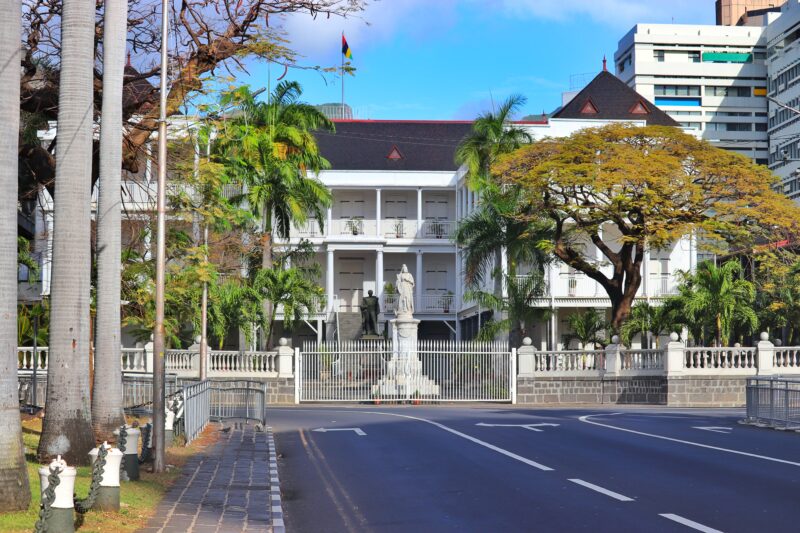 Government House in Port Louis
Government House in Port Louis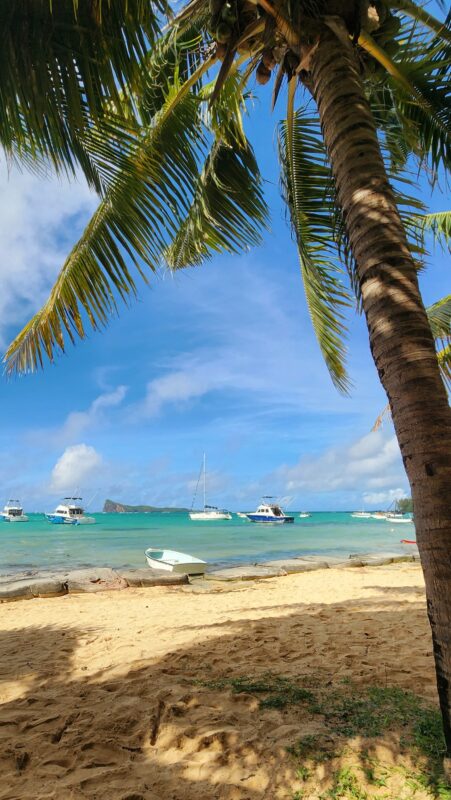 Coin De Mire
Coin De Mire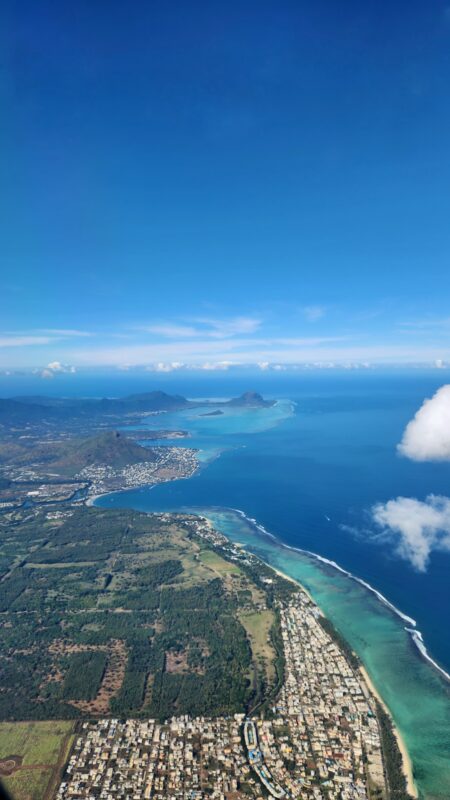 Le Morne
Le Morne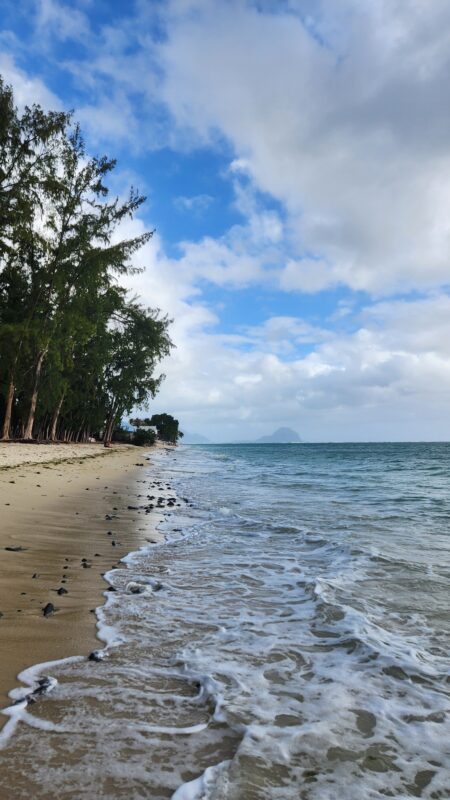 Beach - Flic en Flac
Beach - Flic en FlacFor a better understanding of my conception of the quantum box, I encourage you to check out the A-Theory and B-Theory of Time. As for the hadith I referred to, I recommend watching Regrets on Judgement Day to have a better picture of what I meant.
While at the Bois Marchand cemetery, I mentioned the dargah, a Sufi shrine; you can explore more on The Sufi Saints of Mauritius. About the traditional Islamic belief of the alam e barzakh, the realm where dead people relocate to, Shaykh Yasir Qadhi offers a detailed lecture on Life in the Barzakh. The construction of monuments on graves is a heated debate among Muslim intellectuals; Shaykh Hamza Yusuf and Shaykh Assim Al Hakeem give two different views. For more information on the detractors of Sufism, particularly those opposing the construction of monuments on tombs, check out What is Salafism? and Ibn Taymiyya – The Father of Salafism? As for the lived experience of the waliy ullah, the friends of God, I found Seal of the Saints and Qushayri’s Epistle on Sufism to be enlightening.
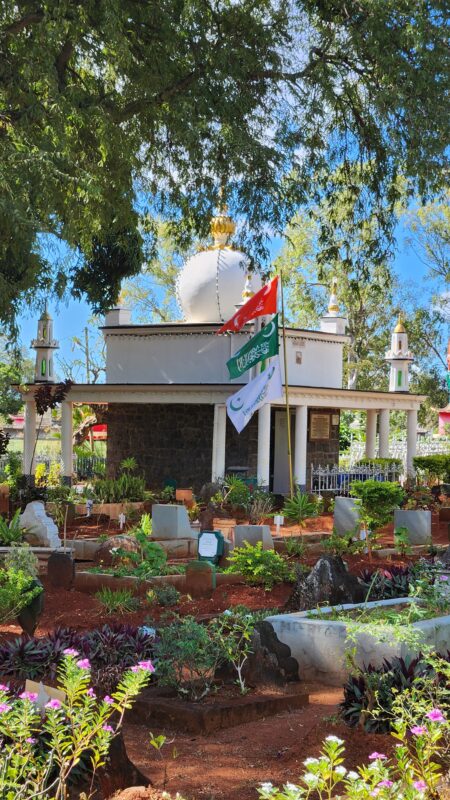 Dargah
Dargah Bois Marchand Cemetery
Bois Marchand CemeteryWhen it comes to matters of the halal and haram, i.e. jurisprudence, Ibn Arabi has an interesting take in Islam and the Living Law.
Finally, for those of you not familiar with Rumi, watch Rumi – The Most Famous Sufi Poet in the World. You can also read Tales of the Masnavi, The Love Poems of Rumi, and In the Arms of the Beloved to better appreciate Rumi’s poetry. The Sufi Path of Love of Rumi contrasts well with the Sufi path of knowledge of Ibn Arabi.
I hope those references give you more context on my story. More importantly though, I encourage you to explore the many themes I present and build on my research.
Peace Be Upon You.
Ijaaz


